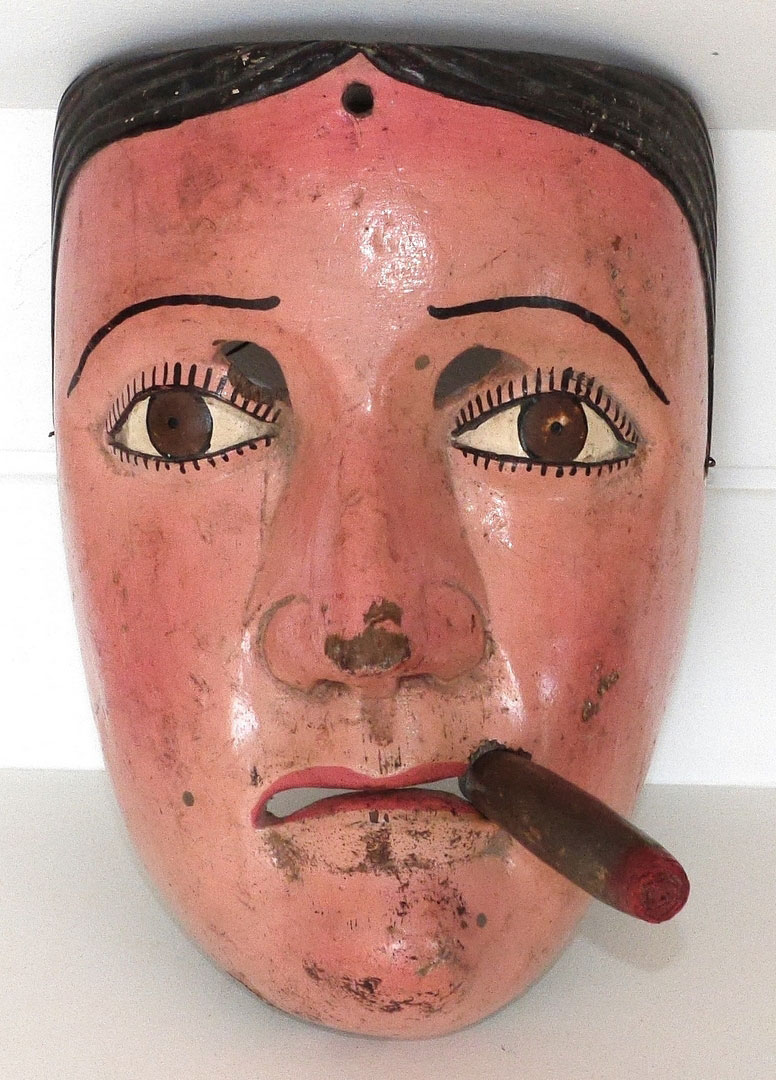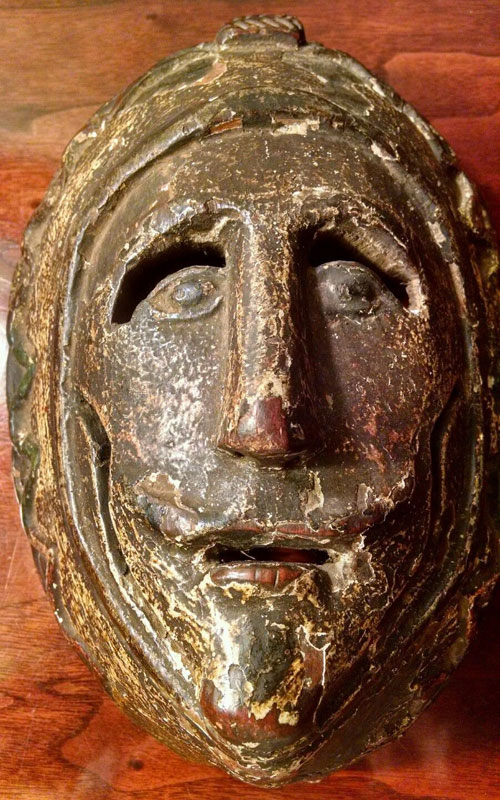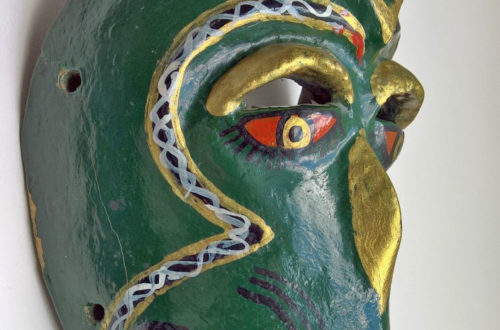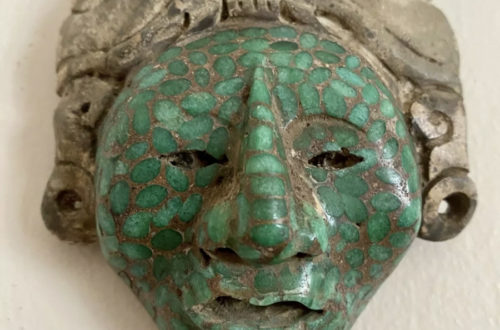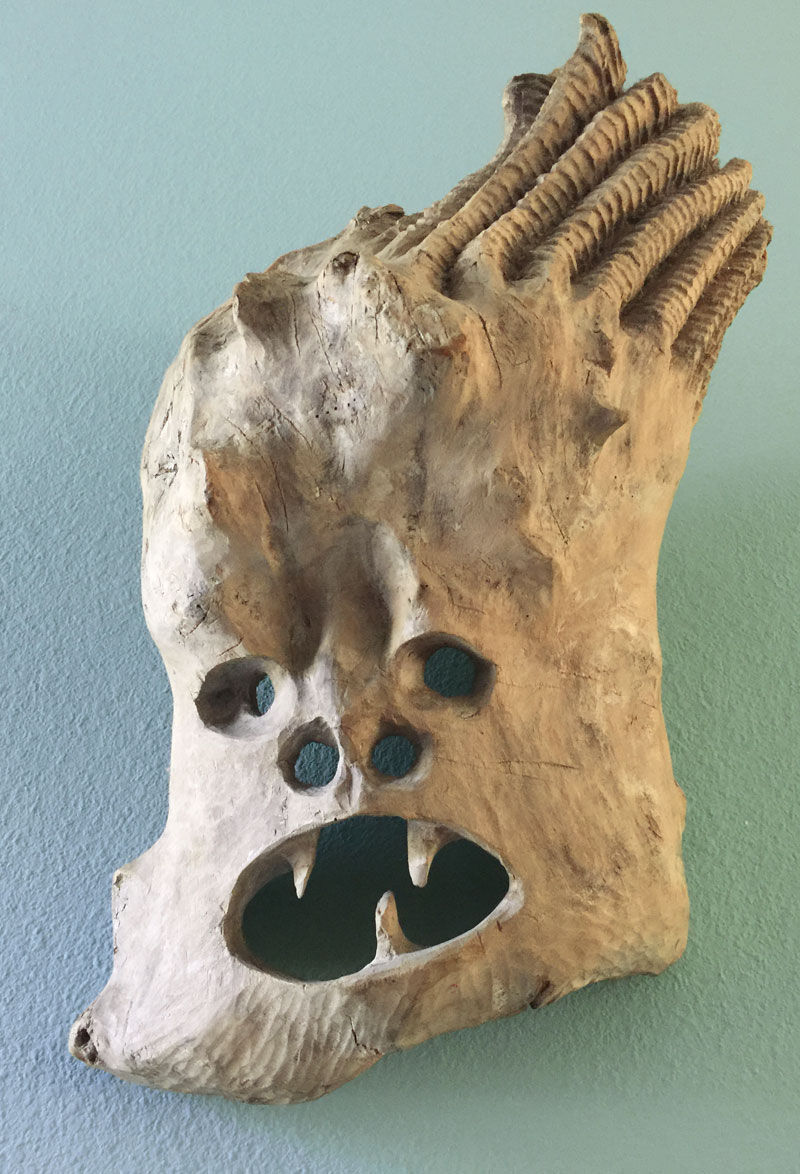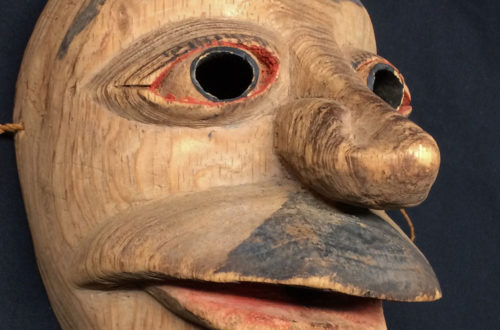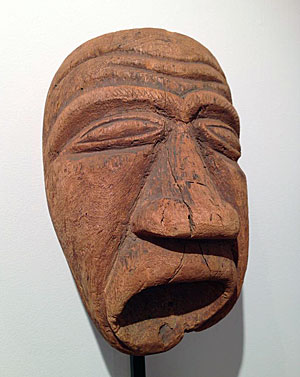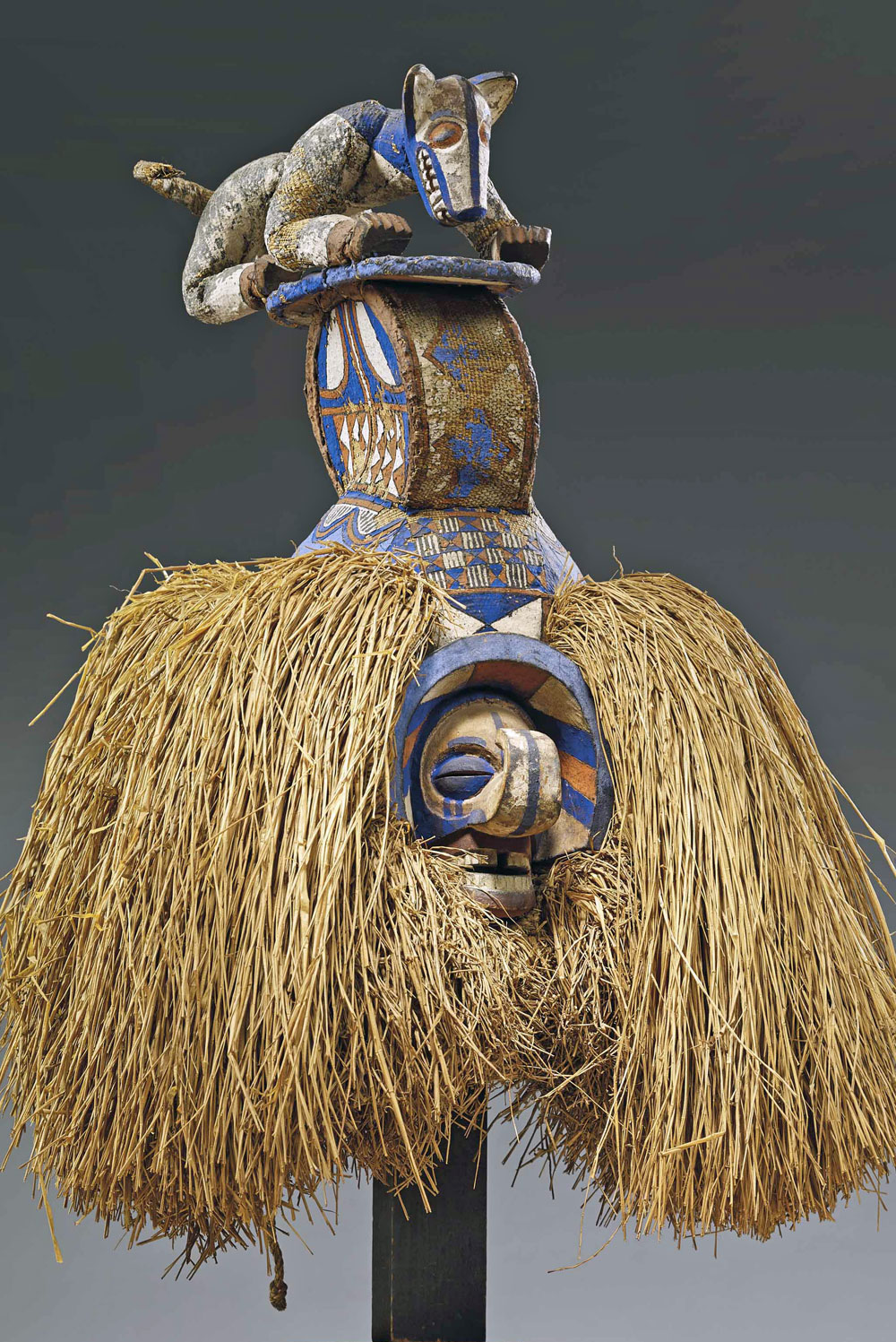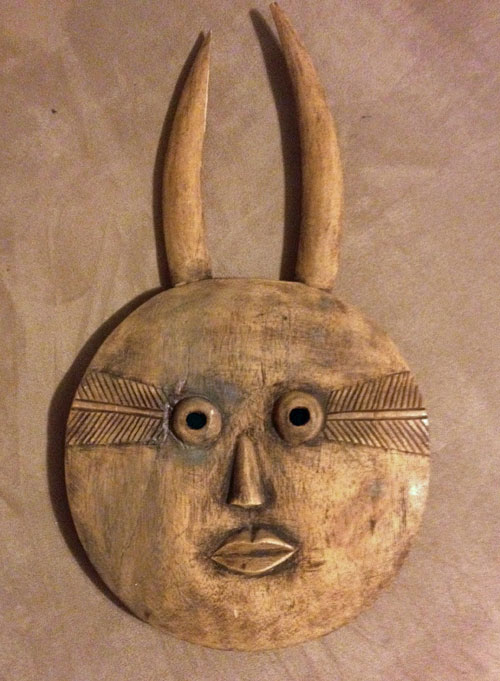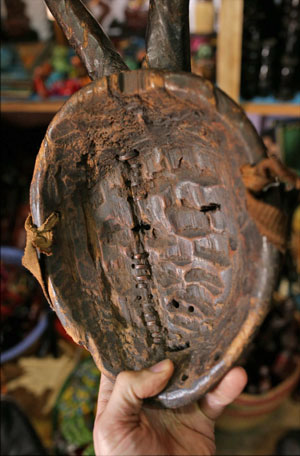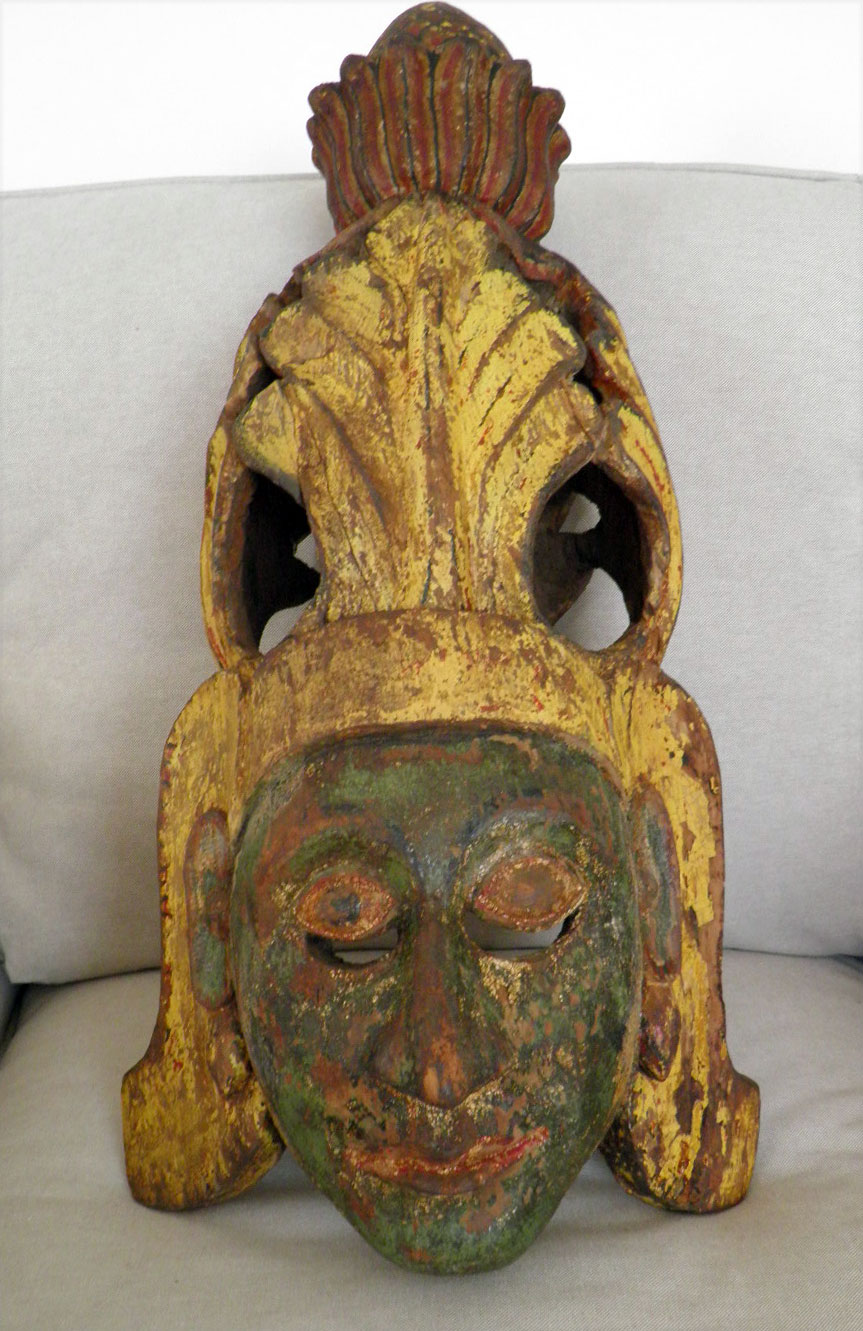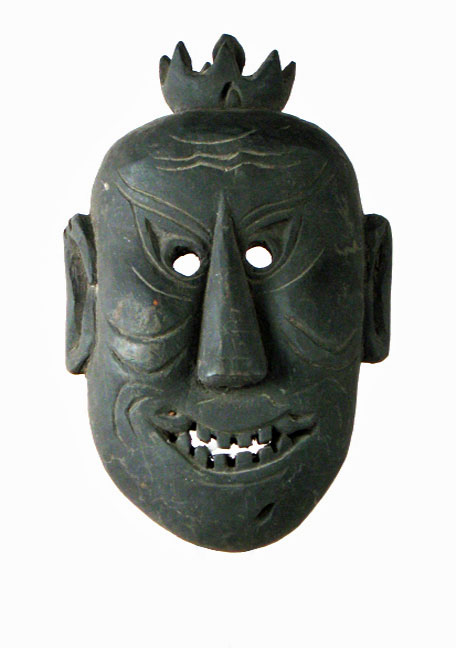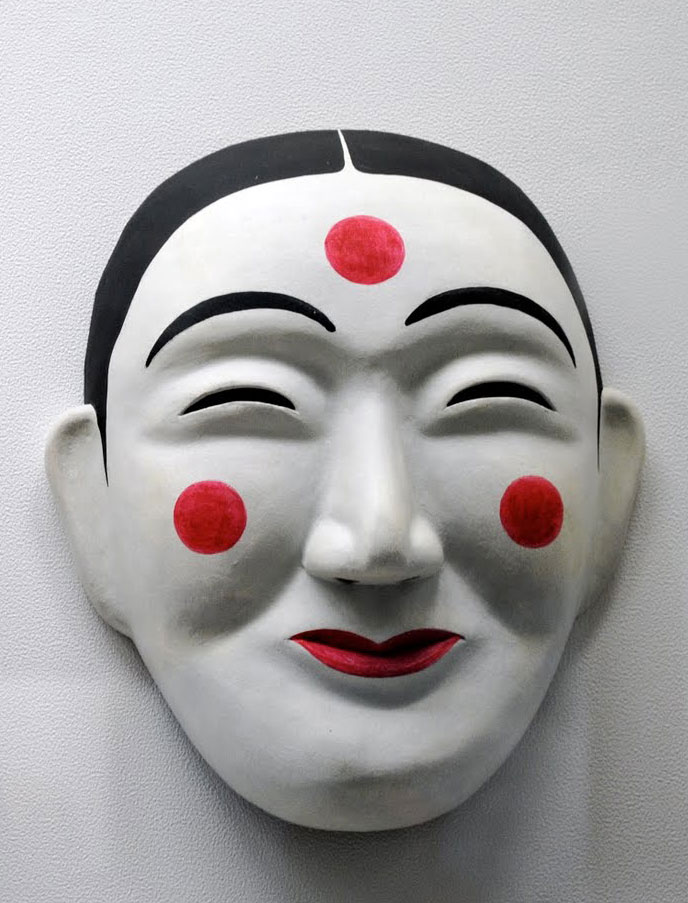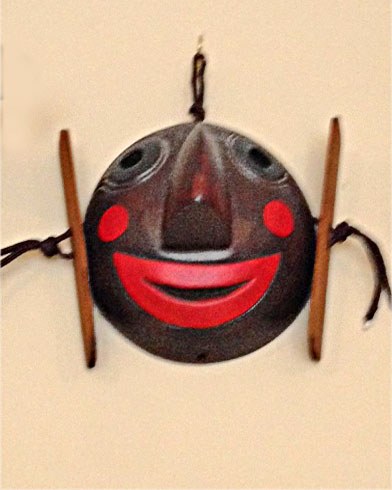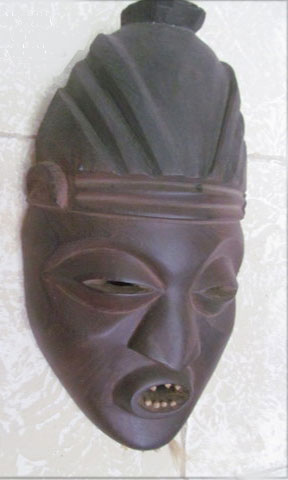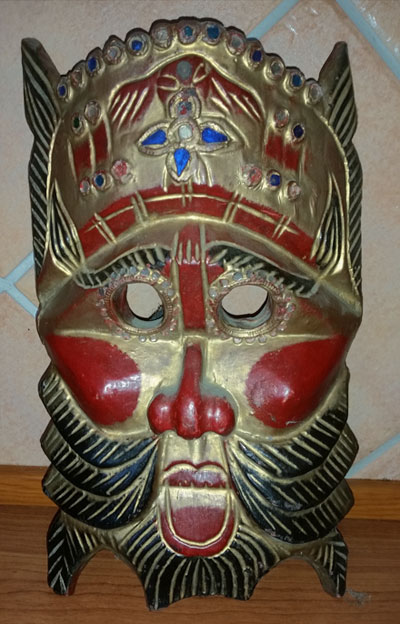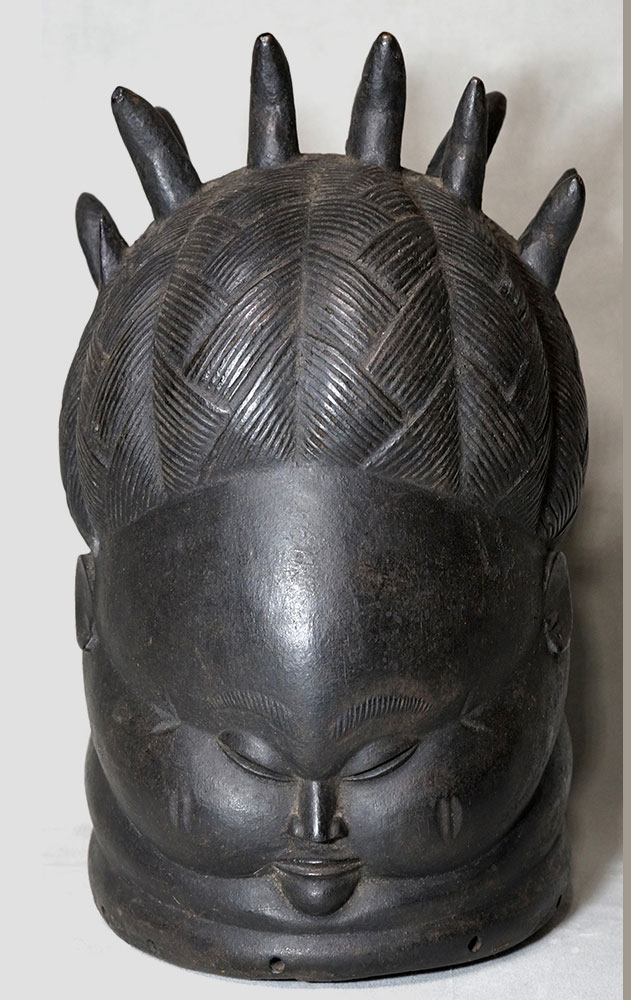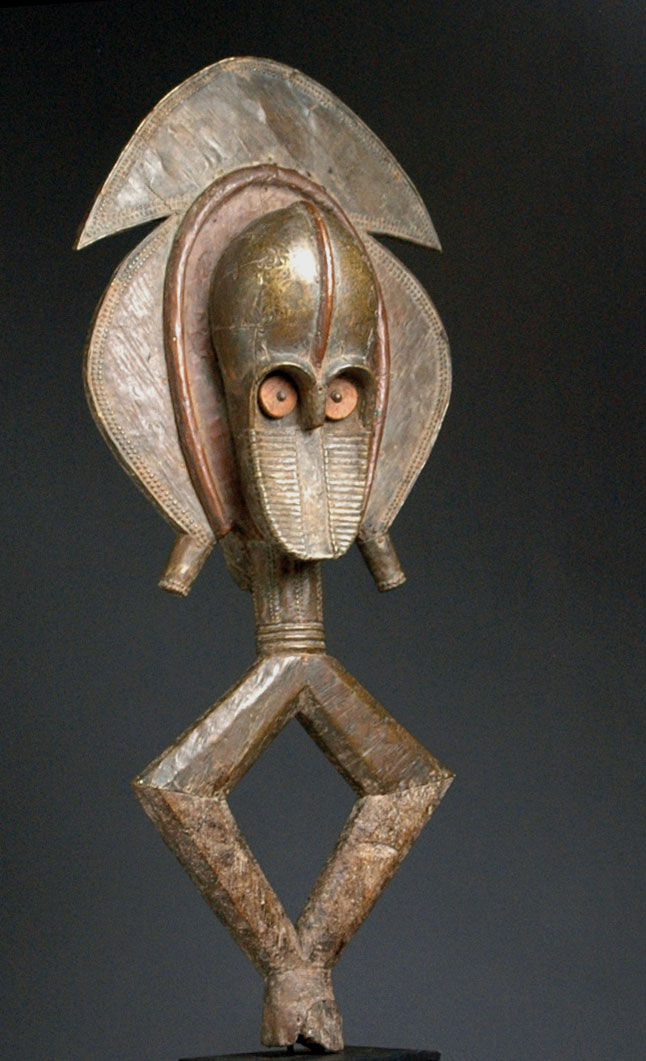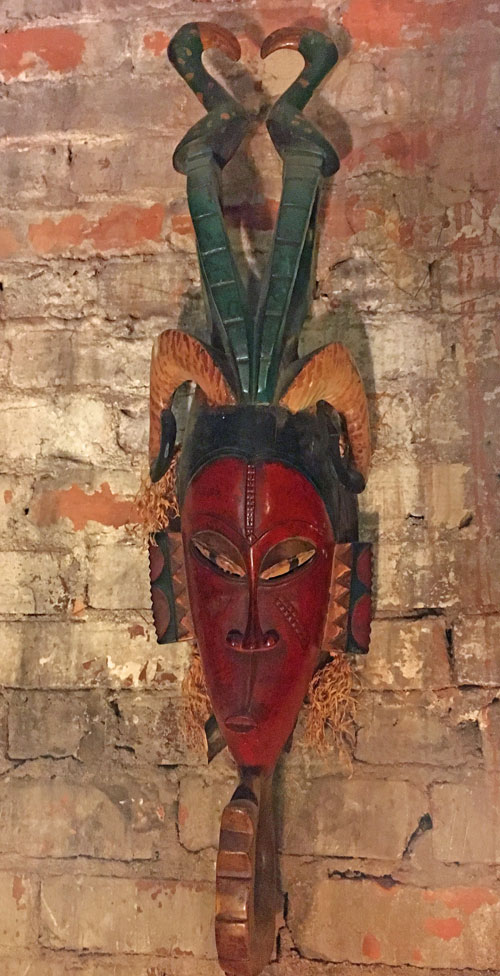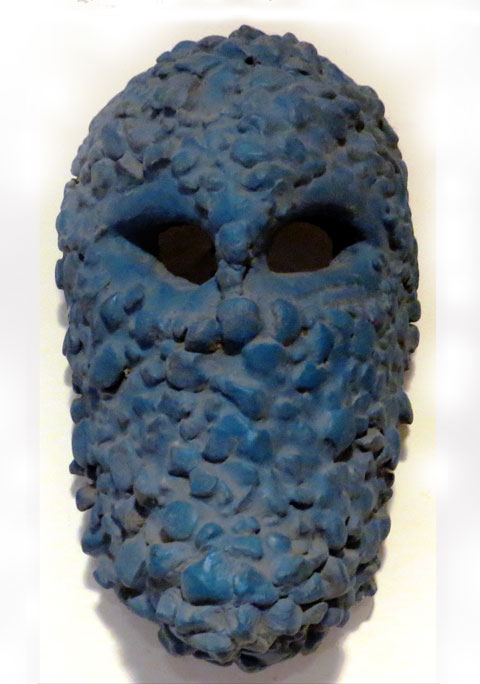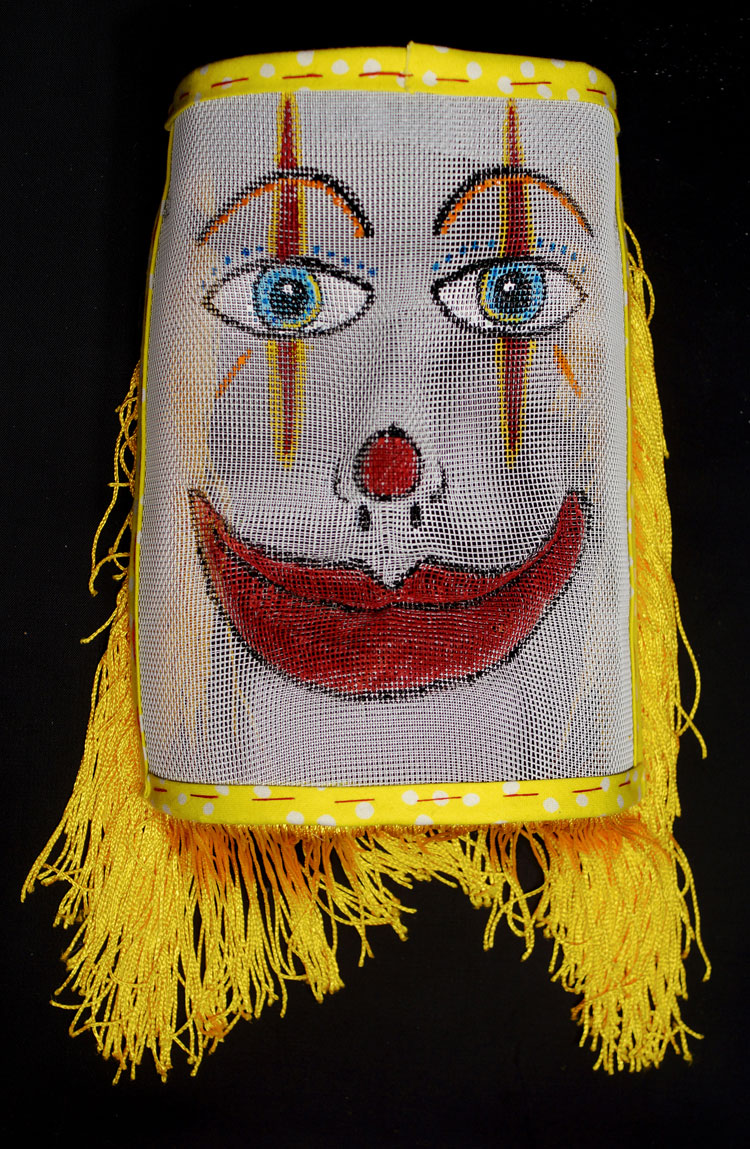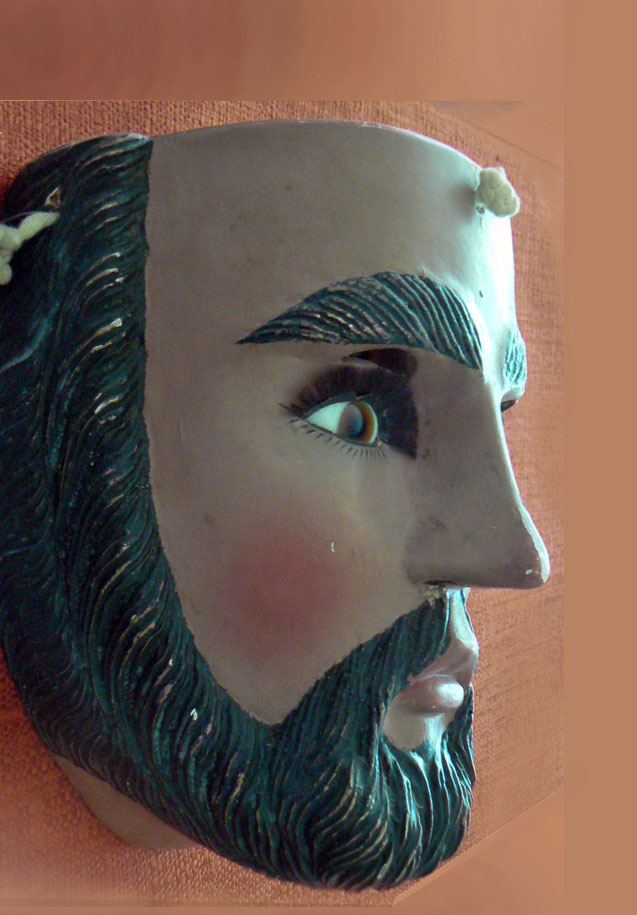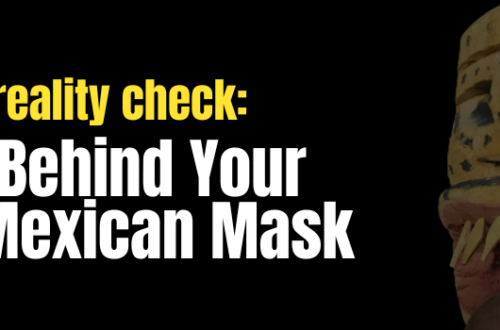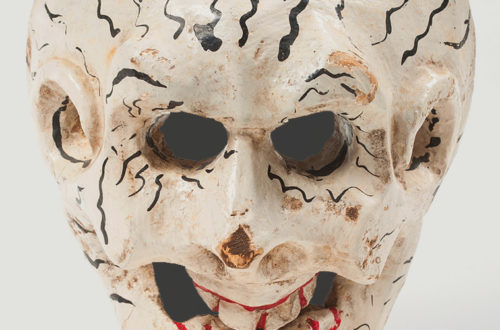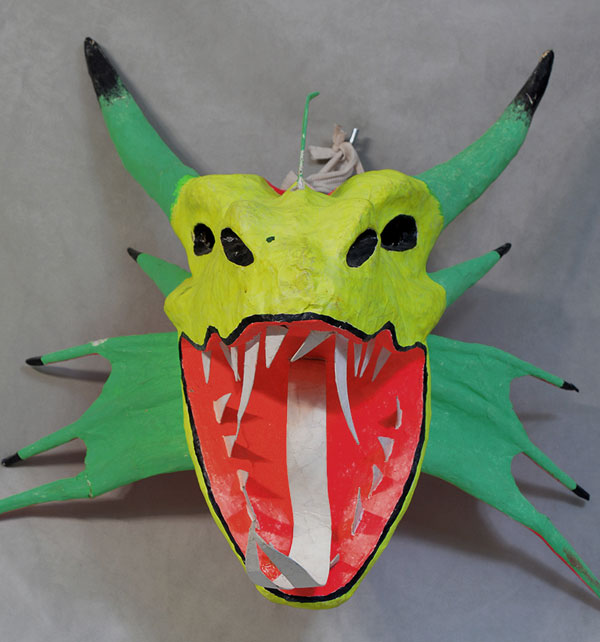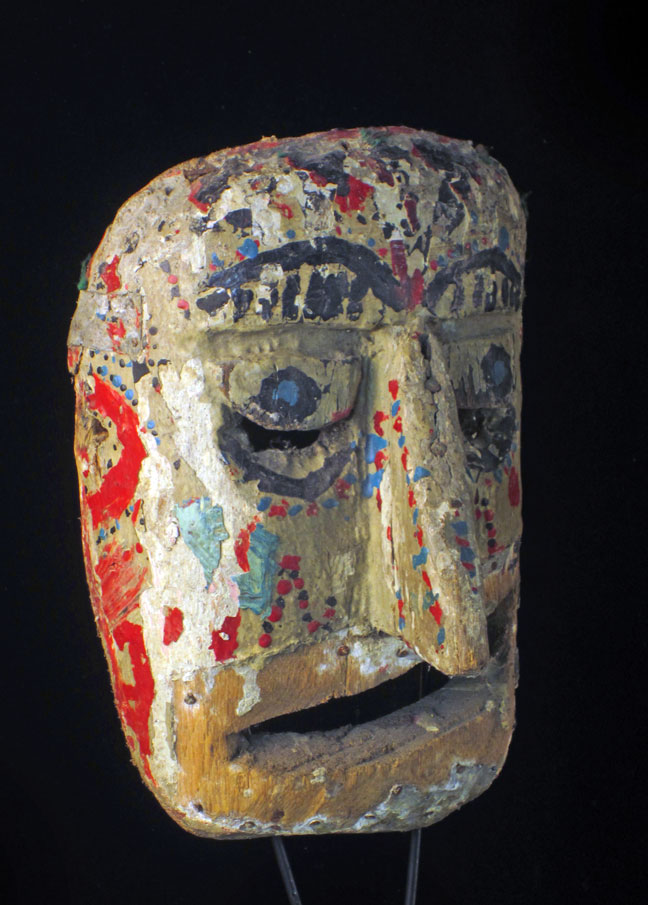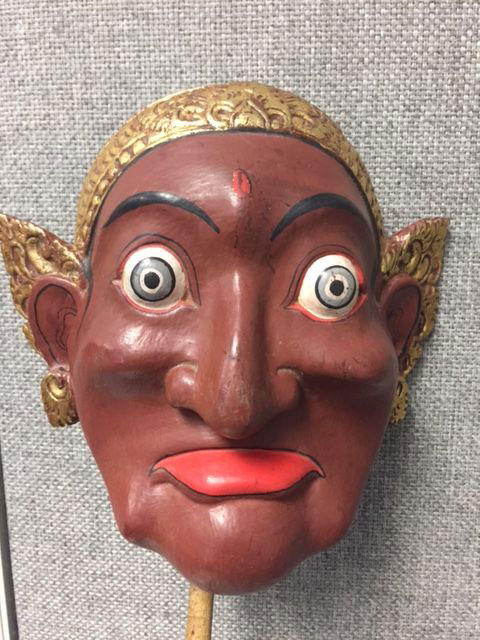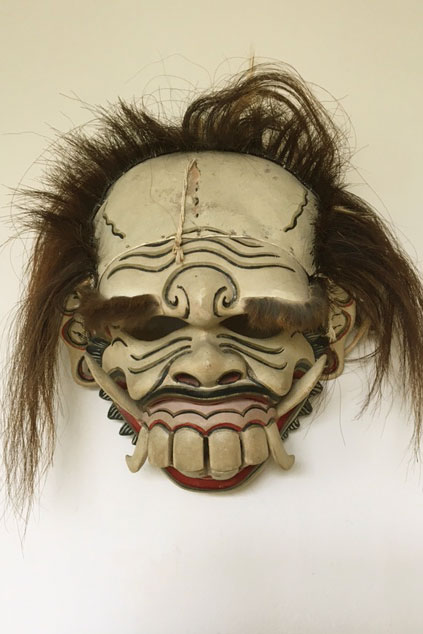Q: Here is a very unusual mask from Guatemala, probably from the 60-70’s. It is said to have been used in the Dance of “Los Viejitos” (Baile Xetones) in San Juan Chamelco, Alta Verapaz. But I do not find any similar masks on the web or in the books. Did you see such a mask before? Jean, 1482 A: The seller may be right. But I’m thinking it could be a Maximon (also called San Simon) mask. Most of the Maximon faces we see are the top part of doll-like statues that can range in size from small to the size of an adult man. They are icons placed in an…
-
-
Mystery Mask Contest
Q: I have a wooden hand carved mask. It is 18H x 12.5W x 11D. It was found in storage auction unit that I won. I only know that previous owner traveled a lot in Asia, Africa and many islands, and from every place he brought something. Wood masks, sculptures, helmets etc, nothing contemporary but usually very old antiques and he furnished his house with expensive furniture, pirate furniture made of wood of sunken ships. This mask is one of the collection. Where is it from? How old could it be and how much could it cost. Please, could you help me with that? Eva, 1481 A: Eva hasn’t given…
-
Yaka mask from D R Congo, Central Africa
Dr. Arthur P. Bourgeois says: “Among the Nkanu, the initiation of young men to manhood is called Nzo Longo. Within this context, Kisokolo masks are distinguished by the two horns of the coiffure and sometimes an upturned nose. Representing a dancing chief with the reputation of a notorious womanizer, the mask dances with another called Makemba, a sorrowful feminine masquerade figure. The upturned nose of Kisokolo may have had a functional role, as initiates at the closing of nzo longo had to eat a piece of manioc bread and goat’s meat from the nose of the mask. Moreover, the full name of the mask is “Kisokolo kudidi mbumba” (“Kisokolo who…
-
Pair of Chi Waras from Mali
This Bamana Chi Wara headdress features a pair of antelope carvings. On March 8th of this year we posted a male version. Now you can see the male and female versions together. This is a high-res photo so blow it up to see the details. A pair of Chi Waras is (arguably) the greatest example of African traditional sculpture. Can you think of anything better? “While there are several versions of this sculpture, the discovery of agriculture is credited to the hero Chi Wara, a half antelope, half human figure born from the union of the sky goddess Mousso Koroni and an earth spirit in the shape of a…
-
Old mask from India or Thailand?
Q: This mask has just been restored. It had suffered serious damage in storage. I would be interested to know its origin and its age. The conservator believes it is probably 17/18th century from Thailand, repainted red in the 19th century to bring it “up to date” with the craze for Indian artifacts at that time. John, 1478 A: The restoration expert did a good job and could be right about age and location. Please tell me who she/he is. Occasionally I’m asked for a recommendation. The mask is Hindu, but I can’t name the character or god. Also, it may be from India or Nepal… and the age is…
-
Korean traditional character mask
Q: The mask is roughly 28 by 20 cm. It is wooden and has a black cloth covering and ties at the back. I think it is of Korean origin, but unsure if it’s an artistic/religious mask or if it depicts a particular character. Maddie, 1477 A: Sorry to take so long. I’ve had some problems that took a week to fix. Your red mask is one of the characters in the Yangju Pyeolsandae Nori, the most popular folk dance in all of Korea. There are over 20 other actors in the dance. Many Korean masks are designated as national cultural properties. Yours is no exception and would have been…
-
Mossi Plank Mask from Africa
A wonderful Mossi Yatenga style plank mask from Burkina Faso, this tall, thin mask consists of a white mask, black and brown square mask that matches the length of the horns carved to resemble those of a gazelle and a plank that is covered in black and white pigment. The tall, vertically oriented, plank masks are used by the Mossi in the traditional state of Yatenga have, for decades, been considered the epitome of Mossi sculptural traditions. Masks are owned by a clan descent from the same ancestor and are used in various ceremonies, including initiations, funerals, and annual year-end sacrifices. The masks represent the spirits of familiar animals and…
-
Should you buy this mask?
This is called an Agbogho mmuuo from the Ashanti people of Ghana, West Africa. Sometimes the sellers of these round carvings will tell you more about their derivation, which goes like this… “Translating into the Queen of women, this mask represents a wealthy woman of high status. She personifies strength, beauty, and pride. It is typically worn during performances at funerals and other ceremonies. Seeking to illustrate maiden spirits, men dress up in these masks and parade as adolescent girls to exaggerate their features. Shows including the mimickers are also joined by musicians who chat ‘Mmanwu si n’igwe’ – meaning the masked spirit from the sky and ‘Udemu na lenu’ –…
-
Authentic Mexican masks, fakes & decoratives
The first mask is called a Parachico and is an authentic Mexican dance mask in the collection of Bryan Stevens who has www.mexicandancemasks.com. Here’s what he has written. “The Parachicos dance is most famously performed in the town of Chiapa de Corzo in the Mexican state of Chiapas. It is said to honor three Catholic saints—Saint Anthony, Our Lord of Esquipulas, and Saint Sabastian. The costumed dancers wear wooden masks with bearded Caucasian faces, they carry handmade tin maracas that are painted silver, and on their heads are headdresses made of woven ixtle (or istle), a fiber obtained from the agave or yucca plant. Their headdresses are decorated with colored…
-
Primitive tribal masks from Java
There are Buddhist-Hindu people farming in the mountains of central and eastern Java that celebrate the classic Topeng dance dramas. Being in remote areas and without much money, they have learned to make their own character masks. They can be crude and rough, but at the same time, very creative. The colorful one is in poor condition and the the black one with hair has big mirrored eyes. Let me know if you like or dislike these strange Indonesian masks.
